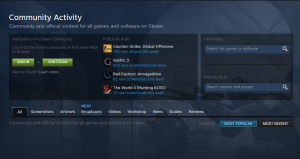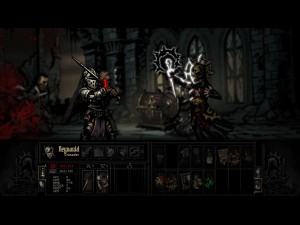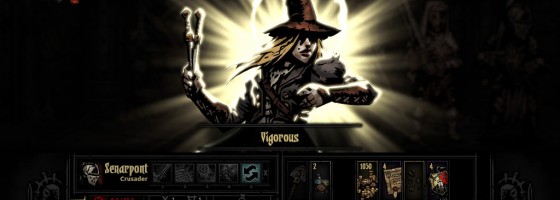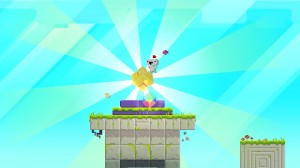Two weeks ago I put up a podcast where I spoke with Seth Sivak from Proleterat and we got on a fascinating discussion about not just game development in today’s market but actually run and maintain a studio. On that cast we talked about how you don’t want to “catch lighting in a bottle” when it comes to your game, but create a perfect storm. For today’s post I want to explore this topic further because this is something that anyone who is trying to create a video game needs to understand.
When it comes to creating that perfect storm, there are three equally important elements that must be focused on and built and we’ll start with the obvious one: The game itself.
The Game:
Your video game is going to be the first thing that people are going to see about you and your studio and it should be obvious just how important it is to make a good game and therefore a good first impression.
I could sit here and type a few hundred words on what makes up good game design but that would be distracting us from the point of this post. To keep it short, you want to make a game that leaves a strong impression on the consumers for any number of reasons: Amazing gameplay, unique art aesthetic, touching story and so on. The more unique your title is, the easier it is to stand out among the numerous game releases.
And for the last two decades, that’s all most designers felt was needed to make it big in the game industry. But today things are different, with so many developers looking to be the next big thing, making a great game is not enough anymore and that’s something that everyone needs to understand and why you need to develop the next sections alongside your game.
Your Company:
Promoting your company is all about making sure that people can easily find information relating to it and in relation your game. Your company site should be easy to follow: all game and contact info should be updated and someone should be able to easily buy your game either from your site or any digital platform that you are a part of as well.
One thing that we see from a lot of developers is that they neglect their company site either because they are too busy, don’t know how or can’t afford to upgrade and they piggyback off of Steam’s community or Reddit as a replacement. But it’s very important from a perception side of things that when someone searches for your game, that a link to a great company site also comes up as if someone is willing to search for your game, they will most likely check out your site as well.

The steam community features are just as important as social media channels in promoting your game and updating your fans.
Another part of building your company brand is also making use of social media: Twitter, LinkedIn, Facebook etc. Even if you don’t have a good company site you still want to have social channels set up for people to follow and find out about your game.
We’ll come back to this in a minute but the reason is you don’t want people to stop hearing about your title and letting interest decline. Going back to Steam for a second, if your game is on Steam then you want to make use of the community features as that’s where someone who buys the game on it will go first.
Now making a game and making sure your company site is updated can be easy as one you’re going to do naturally and the other is just part of the process of getting your company going, but the final part is perhaps the hardest as it’s something that has been ignored by everyone for so long.
Yourself:
The final part of creating a unified brand has to do with you. Making a successful video game is not about staying in your office for 2 years with little contact from the outside world. Every day that you’re designing and working on your game, you should be promoting yourself so that everyone knows who you are. That means using twitter and social media to update people on your game, communicating on your own or steam related forum and generally making sure that people know what’s happening. Something is very wrong if you have not put out any updates in an entire month.
Another part of this means being proactive when dealing with the press; I’ve said this before when talking about emailing developers for coverage on Game-Wisdom but contrary to popular belief, it’s not my job or any Let’s Player or Game Journalist to get in touch with you about your game. While it’s great if we do because that means your game has public awareness, however you should be on the ball when it comes to contacting members of the press. With so many games being released these days, if one developer doesn’t respond, it’s very easy to move onto another studio.
It takes less than five minutes to send an email and that could lead to interviews, free publicity and a new connection for this and future games from your studio.
And this even more important when responding to people who take the initiative to get in touch with you first; don’t let free press coverage walk out the door. If you can’t or don’t want to handle the press side of things, then hire someone to do it for you as you need someone focused on PR.
Personally I know how hard it can be to essentially “cold call” people but just like with anything else the worst thing they can say is no.
Knowing the time to announce your game or get in touch with the press can be tough, but you should follow the idea that your game should be at the point where you are comfortable with someone else sitting down and going over it.
What is the Perfect Storm?
With those three elements covered, we can now talk about what the perfect storm is. If you’re on the ball about your game, your company and yourself, they will allow you to create a brand that will carry your studio from game development, to release and beyond in the public’s eye. When these elements come together, people will be talking about your game and creating interest throughout its shelf life and development.

Redhook Games has done an excellent job in branding that has helped them during kickstarter, early access and most likely whatever their next game is.
More importantly is that it creates a name for yourself and your studio for future games. If people are aware that you did X and that it turned out well, they are more likely to support your future titles simply on the strength of your brand alone.
We talked about this on the podcast and how Redhook Games with the Darkest Dungeon is doing an exemplary job with building their brand and their game. There’s a good chance that whatever their next project will be after the Darkest Dungeon will also have a high success rate thanks to all the work they’ve put into building their brand now.
I said this before in this post and I’m going to say it again: Making a great game is not enough anymore. You’re not the only one who is trying to make something amazing and there is only a limited amount of front page space and consumer interest today.
One day of great sales is not the goal, you want months of sales and interest in you and your studio and focusing on these three elements is key to get that. Many great games have succeeded without focusing on these elements but they are the exceptions and not the norm and the market has shifted since their success.
You want people to be talking about your game as the worst thing that can happen is releasing your game to next to no fanfare or interest. Most Indie developers don’t have it in the budget for massive marketing campaigns like in the AAA sector and that’s where this perfect storm comes in. If you do it right, you’ll get interest and free advertising for your game and again this is all about building that momentum for your brand.
Being proactive is key and if you’ve been neglecting social media and the press, now is the time to get busy. You don’t want to show up with a new game and no one is interested, you want people to be excited before, during and after your game’s launch and having this perfect storm can make that attainable.



